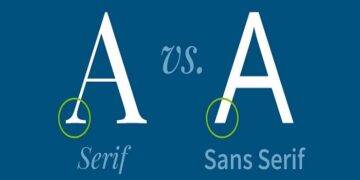Decorative wall decoration has become an increasingly popular phenomenon in recent years. With the help of modern paints, plasters and lapis lazuli, you can create practical, durable and, most importantly, individual solutions, show your imagination, experiment to your heart’s content and update a boring interior at any time. Decorative coatings are applicable to any interior. High-tech and minimalism are hard to imagine without monolithic, seamless surfaces. An indispensable attribute of the Mediterranean style is walls finished with grained plaster or simply painted in bright, cheerful colors.
Even the classics, fond of traditional wallpaper, cannot do without painting in combination with stucco details and coatings imitating stone – usually marble. The choice of certain materials, of course, depends on the project and the purpose of the premises. In bedrooms and other living rooms, more “warm” coverings are still preferred – wallpapers, wooden panels. While in public places – halls, corridors, utility rooms, on staircases, in kitchens and living rooms, decorative wall decoration is often used. The “clothing” of apartments and country houses is also different: in the first case, smooth coatings have an absolute advantage, and plasters with a rougher texture are more often found in cottages.
Even though decorative wall coverings in residential interiors have gained popularity in the last two decades, plasters and paints themselves are very old, time-tested materials. Their main advantage is an environmentally friendly composition, which includes lime, quartz, sand, coloring pigments and various binders. Acrylic-based materials are in high demand. Even special paints with improved environmental characteristics have been developed for allergy sufferers, some of them, for example, have a photocatalytic effect: special paint components help break down toxic compounds present in the air into safe elements.
Modern decorative coatings “breathe”, let steam through, have anti-vandal properties, are easy to wash and restore, keeping their original color for up to 15 years.
Against the background of all the advantages, perhaps the only “disadvantage” of decorative coatings is the strict requirements for preparing the walls. The base must be level, cleaned and well-grounded. It is also important to follow the application technology recommended by the manufacturer – the appearance and durability of the finish depend on this. But it is enough to prepare the walls once, and in the future you will be able to repaint them many times, refreshing the interior and changing its color scheme.
From stone to silk
The range of modern materials for the decorative decoration of premises is very wide. The simplest, but at the same time spectacular option – paints. Homogeneous walls painted in different tones are an excellent background for any setting. Both light, almost white, and saturated, matte and glossy surfaces can serve as a color accent or, on the contrary, “dissolve” in the interior. Special types include magnetic paints and coatings for school boards – they are usually used in kindergartens.
If you add texture to the color, you will get smooth decorative coatings imitating various materials – from silk and velvet to marble and onyx. This technique requires great skill and is performed by professional kansas city siding contractors who carefully and believably “draw” the veining of the stone and reproduce complex textures. In the end, all this is covered with varnish or wax for greater shine, smoothness and durability.
The third group of materials is textured plasters. They are applied in several stages: a relief plaster is laid on top of the primer, and then the finished texture is colored in any color with blue or paint. Another option: applying a base color, and then creating a relief – with the help of a sponge or a roller, brushes, brushes, gloves … Each master uses his technology of decorative decoration and sometimes turns the wall into a real work of art.
Fashion effects
Almost every season, manufacturers offer new, bright solutions for interior decoration. Today, brutal micro concrete and metal are at the peak of fashion. Even the decorative coatings of traditional colors and textures acquire a cold and mysterious shine, the most expressive effect is created by the finish that imitates rusty metal. Of course, such options are not suitable for every interior and are used very carefully and selectively – for example, to decorate one wall.
Light, airy coverings are much more versatile – they have been popular for more than the first season. So, thanks to mother-of-pearl, an iridescent “silk veil” is formed on the surface, which plays in the light. Depending on the lighting, the wall can look cold or warm. But the Venetian plaster that imitated marble, which was fashionable a few years ago, is today found only in classic interiors, giving way to modern modifications.
When choosing one or another finishing material, according to experts, it is much more important to follow not fastidious fashion, but one’s own feelings. Whatever components the interior consists of, it should remain harmonious and comfortable for the owners for many years.









